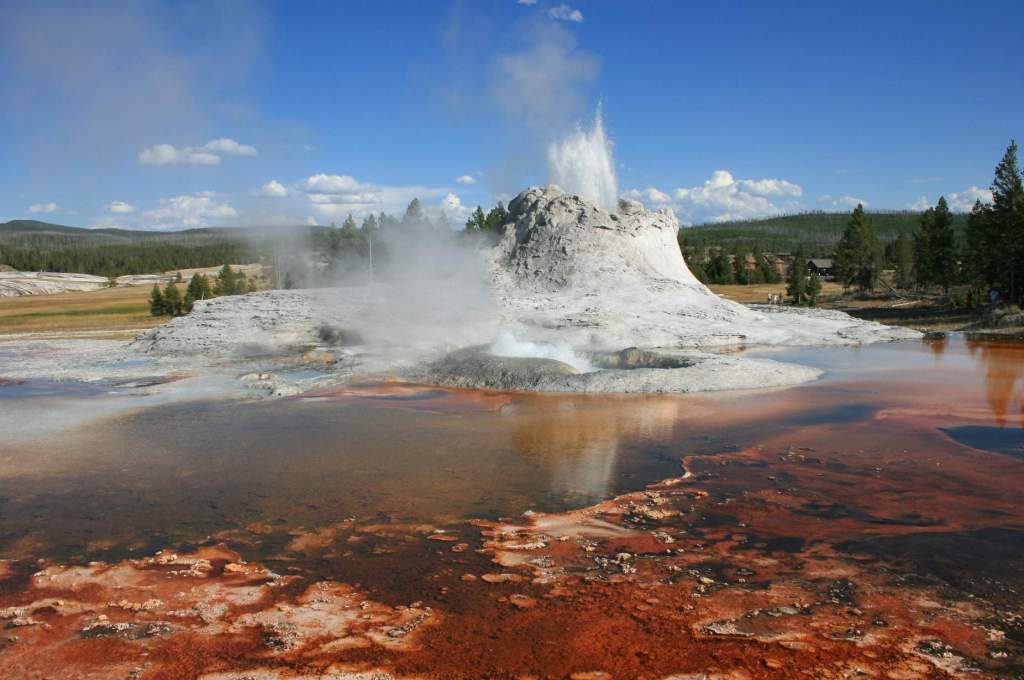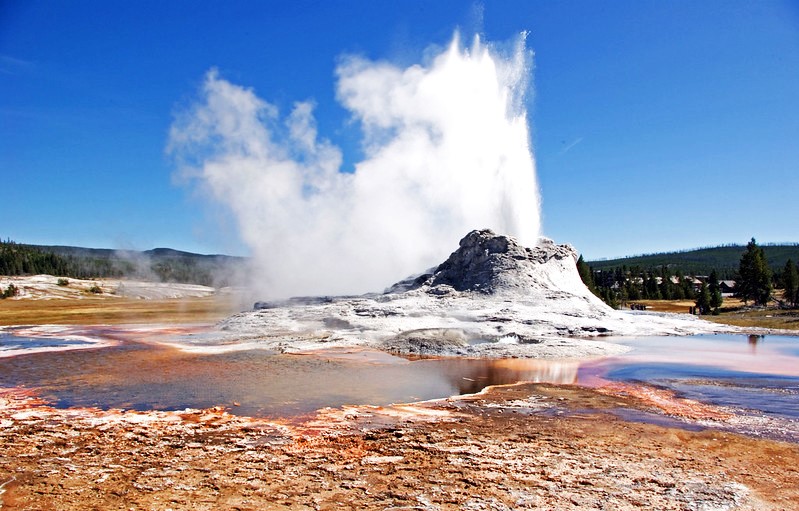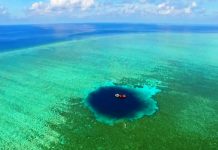Castle Geyser had a unique appearance, is a tall geyserite cone structure, located in Yellowstone National Park’s Upper Geyser Basin, Teton County, Wyoming. It is known for its exceptionally substantial deposits of geyserite sinter, which form a cone. These deposits have been related to a castle in terms of look. The Castle Geyser cone dates back thousands of years, even older platforms. Castle Geyser is the oldest of all geysers in the basin, and its eruption pattern has changed significantly throughout its history.
The top edges of the geyser, looked like the typical profile associated with the modern concept of a castle, with the appearance of several turrets, and in particular with the crenellation along the top edges of what appeared to be its towers. The layers of material produced in subsequent eruptions cause the cone’s form to vary over time.
Eruption Cycle: The eruption cycle of the Castle Geyser lasts 16–17 hours. Before transitioning to a piercing steam phase that lasts for 30 to 40 minutes. The geyser shoots hot water for roughly 20 minutes in a vertical column that reaches a height of 80-90 feet. The water is unreachable for scientific measures because of the height of the cone and the quantity of brittle sinter.
Carbon-14 dating was used to date Castle Geyser’s sinter cone to around 1022. This date is far younger than the previously estimated age of 5,000 to 15,000 years. A 3-D laser scan of the cone reveals that the geyser evolved through four to five separate stages before reaching its current structure.
In November 2002, the Denali earthquake in Alaska’s Denali National Park reduced the frequency of eruptions at Castle Geyser and other Yellowstone geysers. However, the afflicted geysers have since resumed their regular patterns.
Compared to the sinter steps on the east side of Castle Geyser, the western side seems smoother. According to the legend, visitors ripped off the thermophile mats that were once on the cone, irreversibly harming its structure. The water is currently flowing down the east side, and no thermophiles are in sight.
Nathaniel P. Langford provided this narrative in his 1871 Scribner’s article:
“The Castle geyser, located on the summit of an incrusted hill, features a turreted crater through which a significant volume of water is ejected at intervals of two or three hours to a height of 50 feet (15 m) via a discharging hole of three feet (0.91 m) in diameter. The architectural elements of the silicious sinter surrounding it, which is highly huge and compact, implying that the flow of water must have been considerably greater in the past than it is now, inspired its name. A vent beside it regularly discharges a massive stream of boiling water, and while the geyser is active, the water in this vent heats and bubbles violently.”.













